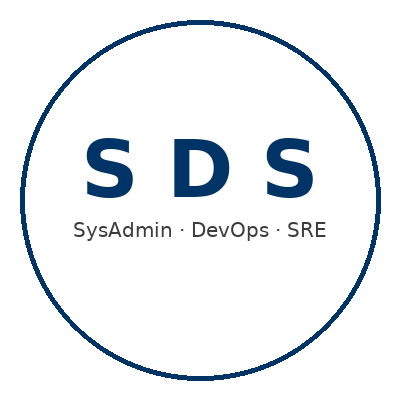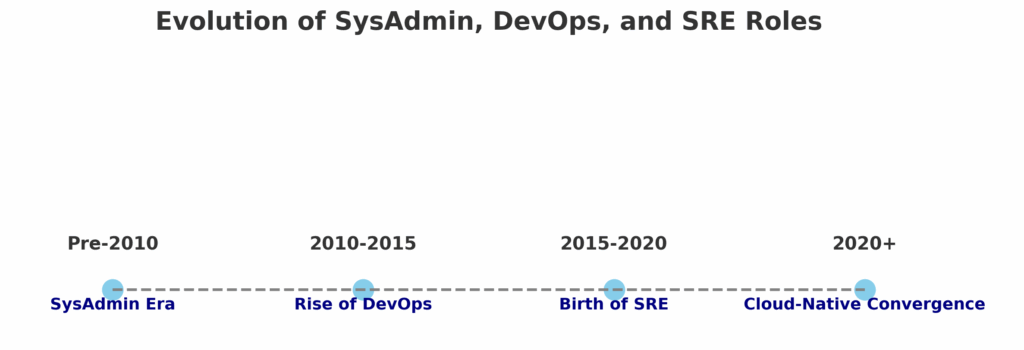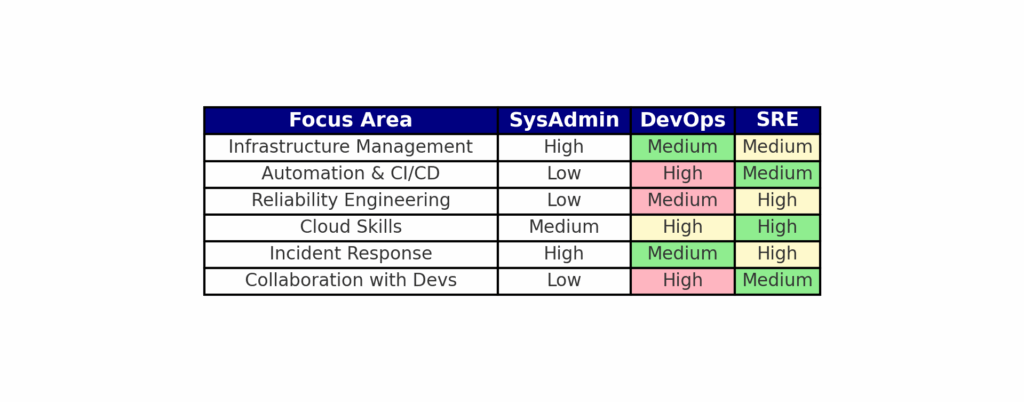
In the world of technology, three roles have shaped how systems are built, run, and kept alive: the traditional System Administrator, the modern DevOps engineer, and the specialized Site Reliability Engineer. Each emerged from different needs, shaped by the tools and challenges of their time. As businesses shifted from on-premises hardware to cloud-native architectures, these roles adapted, overlapped, and sometimes evolved into one another. This is the story of their journey—where they came from, how they’ve changed, and where they stand today.
The SysAdmin Era
Once upon a time, in the early days of corporate IT, the System Administrator was king. SysAdmins lived in server rooms, surrounded by humming machines and tangled cables, guarding their racks of hardware like treasure. They installed operating systems by hand, configured networks through terminal windows, and sprang into action when something broke. Their mission was clear: keep the lights on and the systems running. It was a reactive, hands-on craft rooted in deep technical know-how of physical and virtual infrastructure.
The Rise of DevOps
As software delivery sped up, companies realized they couldn’t afford the wall between developers and operations. Out of this need came DevOps—a new way of working that blended code and infrastructure into a seamless pipeline. DevOps engineers became the bridge, automating deployments, scripting server provisioning, and building CI/CD pipelines. They brought a culture of collaboration, where developers thought about operations and operations thought about development. With the shift to cloud platforms, DevOps engineers used Infrastructure as Code to spin up environments in minutes instead of days, leaving behind the slow, manual processes of old.
The Birth of SRE
Meanwhile, in the halls of Google, a different breed of engineer emerged: the Site Reliability Engineer. Unlike traditional operations staff, SREs wrote code to solve operational problems. They measured uptime and performance with surgical precision, setting Service Level Objectives and enforcing error budgets. Their guiding philosophy was simple—reliability is a feature, and it should be engineered just like any other. They didn’t just fix problems when they happened; they built systems to prevent them, focusing on scalability, fault tolerance, and automation at massive scale.
Meeting in the Cloud
As the world moved to the cloud, these three characters found themselves sharing the same stage. SysAdmins learned to manage AWS, Azure, and GCP environments instead of just physical servers. DevOps engineers saw their automation skills become even more powerful in the elastic world of cloud infrastructure. SREs adapted their reliability playbooks to distributed, multi-region architectures. All three roles still cared about uptime, security, and performance—but their toolsets and mindsets were evolving fast.
5. Overlap and Distinctions

Despite their shared goals, they each kept a unique focus. The SysAdmin still concentrated on stability and maintenance, often in smaller or legacy environments. The DevOps engineer championed speed and automation, building pipelines and processes for continuous delivery. The SRE honed in on reliability metrics, balancing innovation speed with system stability. DevOps was a broad cultural movement, SRE a specialized engineering discipline, and SysAdmin the traditional operations backbone.
6. Who Supersedes Whom?

Over time, DevOps absorbed much of the SysAdmin’s work, automating away many manual tasks. SRE, in turn, emerged as a specialized form of DevOps for organizations that operated at massive scale or with strict reliability demands. In small companies, one person might wear all three hats; in big tech, each role could be a dedicated career. None fully replaced the others—they evolved together, each born from the needs of the era, but in the cloud age, DevOps and SRE often lead the way forward, while the classic SysAdmin becomes rarer, though never obsolete.
In the end, the story of SysAdmins, DevOps engineers, and SREs isn’t about one replacing the other—it’s about evolution.
Each role emerged to meet the demands of its time, shaped by the pace of technology and the move from static, on-premises servers to dynamic, cloud-native environments. The SysAdmin laid the foundation, DevOps redefined the workflow, and SRE pushed the limits of reliability at scale. Together, they reflect a shared mission: to keep systems running smoothly, securely, and efficiently in an ever-changing digital world. As cloud technologies continue to advance, these roles will keep evolving—sometimes blending, sometimes specializing—but always adapting to the challenges of tomorrow.

Technologist, Cloud Promoter, Automation and Continuous Optimization Advocate.